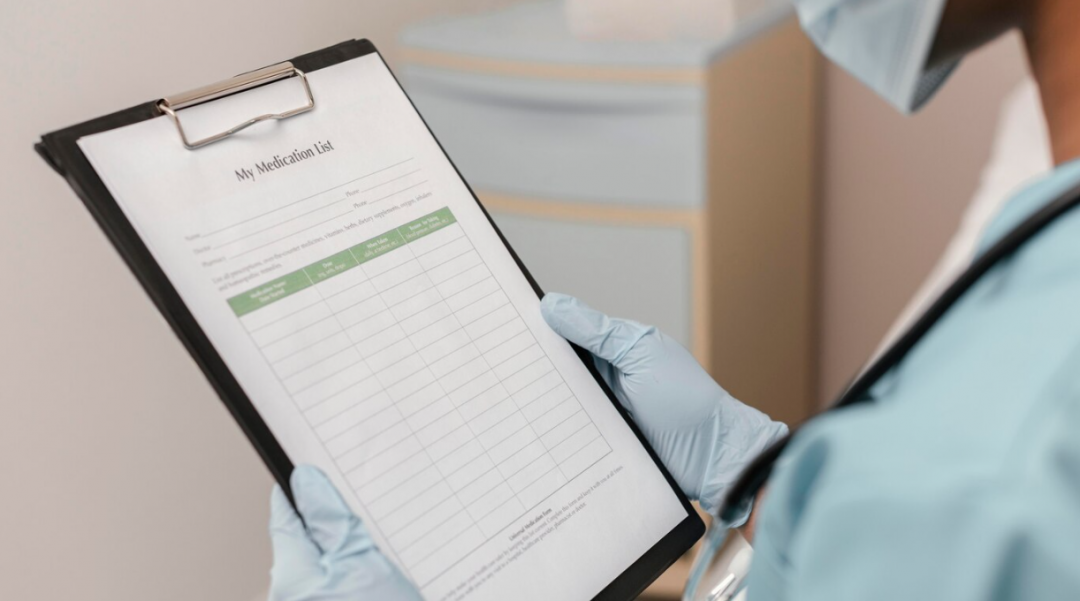
Just like yearly physical examinations, maintaining a healthy lifestyle through proper nutrition and regular exercise is crucial for overall well-being. Annual check-ups play a vital role in detecting serious conditions and diseases at an early stage.
But what exactly does an annual physical exam involve? Do these examinations differ based on gender, and, most importantly, will your health insurance plan cover them? This article offers an in-depth exploration of what you can anticipate during your annual physical exams, covering everything from preparation to the essential questions to discuss with your physician.
Customized Annual Physical Preparation
Preparing for your annual physical examination typically involves a standard checklist. However, your doctor may tailor the assessments based on factors such as family medical history, recent health events, or your age, ensuring a comprehensive and personalized evaluation.
What’s Included in a Comprehensive Annual Physical Exam?
Annual physical exams, conducted once a year, should cover these essential aspects:
- Medical History: Reviewing family health, medication, past treatments, diet, and exercise;
- Vital Signs: Recording heart rate, blood pressure, temperature, respiration rate, and blood oxygen levels, comparing them to norms and prior results;
- Blood Tests: Uncovering underlying health issues;
- Visual Inspection: Assessing skin, eyes, hands, and nails;
- Physical Examination: Examining the heart, lungs, limbs, joints, and skin with a stethoscope;
- Cancer Screening: Tailored to factors like gender, health status, and family history.
Key Questions for Your Doctor During Exam
Establishing open and honest communication with your healthcare provider is vital for a productive annual wellness examination. Prior to your appointment, consider these questions to ensure a thorough grasp of your health status:
- Are there any lifestyle adjustments I should consider?;
- Are vaccinations or COVID-19 boosters recommended at this time?;
- Do I require additional screenings or tests?;
- What is the timeline and process for receiving my test results?;
- Should any changes be made to my current prescriptions?
Comprehensive Checklist for Annual Men’s Health Exams
Though the core elements remain consistent for both genders, annual physical exams for men also include specific evaluations for prostate health, abdominal aortic aneurysm, and heart disease.
Common Men’s Health Concerns
Men’s health encompasses various aspects, from prostate health to heart disease. Here’s a comprehensive look at some of these concerns and the diagnostic procedures associated with them:
- Prostate Health: Regular check-ups for men typically include prostate exams as part of their annual physical examination. These exams often involve not only a physical assessment but also additional diagnostic measures such as ultrasound exams, prostate-specific blood tests, mid-stream urine tests, and, if necessary, prostate biopsies to investigate suspected prostate cancer;
- Abdominal Aortic Aneurysm: Men are at a higher risk of experiencing a swelling in the abdominal section of the aorta, a condition that can be life-threatening, especially when symptoms are absent. Diagnosis typically occurs through abdominal ultrasound exams, CT scans, and MRI scans, helping to detect and monitor this potentially dangerous condition;
- Heart Disease: Heart disease is the leading cause of death among men, often sneaking up without clear symptoms. It comes in various forms, including atherosclerotic disease, heart arrhythmias, and valvular heart disease. Diagnosis involves tests such as electrocardiograms (ECG or EKG), echocardiograms, and Holter monitoring, allowing healthcare professionals to identify and manage these potentially life-threatening heart conditions.
Women’s Annual Physical Examination Checklist

Similar to the comprehensive exams designed for men, women also have their specific health concerns to address. The annual physical examination checklist for women encompasses screenings for conditions that are more prevalent in females, such as breast cancer, reproductive system disorders, and autoimmune diseases.
- Breast Cancer: Timely detection plays a pivotal role in effectively managing breast cancer, much like any other cancer. Common diagnostic methods for breast cancer include a physical breast examination, mammography, ultrasound examination, and breast biopsy;
- Reproductive System Disorders: Diseases affecting the female reproductive system, such as cervical cancer, endometriosis, and uterine fibroids, can have significant health implications. Diagnosing these conditions typically involves procedures like ultrasound examinations, hysteroscopy, pap tests, and colposcopy;
- Autoimmune Diseases: Autoimmune diseases vary in symptoms and severity, necessitating ongoing monitoring. Given the diverse range of autoimmune conditions, healthcare providers often employ an antinuclear antibody (ANA) test during evaluations for these diseases.
Does Your Insurance Cover Annual Physicals?
The majority of insurance plans typically include coverage for comprehensive wellness visits, but it’s important to distinguish between these wellness visits and full-scale annual physical exams.
Comprehensive wellness visits generally encompass basic measurements such as weight, height, and blood pressure checks. In contrast, annual physical exams are considerably more comprehensive, often involving blood tests and additional diagnostic evaluations.
To ensure clarity and avoid unexpected costs, it’s advisable to contact your insurance provider to ascertain the specific benefits covered under your plan before scheduling your appointment. This proactive step will help you understand what services are included and help you make informed decisions regarding your healthcare.
What Is the Cost of an Annual Physical Exam?
- The cost of an annual physical exam can fluctuate significantly based on factors like your insurance coverage, the healthcare provider you visit, and your geographic location;
- According to data from House of Debt, individuals without insurance coverage can anticipate paying somewhere in the range of $50 to $200 for a standard annual physical exam.
It’s important to note that this price typically covers fundamental elements of the examination, including a review of your medical history, a general physical assessment, vital signs measurement, and a basic vision test. If you require additional services like a blood panel test, ultrasound, or CT scan, the expenses will differ and are not typically included within the $50 to $200 price range.
Does Medicaid Provide Coverage for Annual Physical Exams?
Yes, Medicaid does provide coverage for annual physical exams. Furthermore, Medicaid offers an array of preventive services, including screenings for prevalent chronic diseases, infectious diseases, and various types of cancer. This coverage extends to immunizations and clinical as well as behavioral interventions to manage chronic conditions and mitigate associated risks. Additionally, Medicaid offers counseling to support individuals in managing their chronic diseases independently.
Is Annual Wellness Visit Covered by Medicare?
Medicare beneficiaries are eligible for an annual wellness visit if they have maintained Part B medical insurance for more than a year. During this wellness visit, your healthcare provider typically administers a Health Risk Assessment questionnaire to create a personalized prevention plan. The visit may encompass the following components:
- A thorough review of your current healthcare providers, prescribed medications, and your medical and family history;
- Routine measurements, including height, weight, blood pressure, and other standard health metrics;
- The establishment of a schedule for appropriate preventive services, screenings, and vaccinations;
- Personalized health recommendations and advanced care planning discussions;
- Identification of risk factors and exploration of relevant treatment options;
- Cognitive assessments designed to detect early signs of dementia and Alzheimer’s disease.
Does Private Health Insurance Cover Annual Physical Exams?
The extent of coverage for annual physical exams under private health insurance plans varies based on the specific terms and conditions of your plan. Many health insurance plans may include coverage for preventive services, such as your annual exam, as long as you see an in-network healthcare provider.
To ensure clarity regarding your coverage, it is advisable to contact your insurance provider prior to scheduling your appointment. This will enable you to confirm whether your plan covers annual physical exams and whether there are any specific requirements or limitations associated with your coverage.
The Significance of Preventive Healthcare
Prioritizing preventive healthcare plays a pivotal role in preserving overall well-being and minimizing the likelihood of chronic ailment development. By actively engaging in preventive measures in conjunction with annual physical exams, individuals can take proactive steps to safeguard and enhance their health.
The Benefits of Preventive Measures
By proactively embracing healthy habits and participating in regular screenings and vaccinations, individuals can significantly diminish the risk of developing chronic conditions and identify potential health concerns at their early, more manageable stages. These preventive measures empower individuals to take charge of their health, thereby promoting overall well-being and increasing the prospects of a longer and healthier life. Investing in prevention today translates into an investment in a healthier future.

Early Detection and Timely Intervention
Through consistent screenings and annual physical exams, healthcare professionals can pinpoint potential health risks, detect diseases in their nascent stages when treatment is often more effective, and initiate prompt interventions. Early identification of conditions equips individuals with better prospects for successful treatment, improved outcomes, and an elevated quality of life.
Promoting Health and Well-being
Beyond merely averting illness, giving priority to health promotion involves embracing lifestyle habits that bolster physical, mental, and emotional well-being. Regular exercise, balanced nutrition, stress management, and adequate sleep all contribute to vitality and resilience. By adopting these practices, individuals can enhance their overall quality of life, fortify their immune systems, and nurture a positive outlook, leading to a more balanced and satisfying existence. Investing in health promotion and well-being is an investment in a happier and healthier life.
FAQ
During an annual physical exam, your healthcare provider typically assesses basic vitals such as height, weight, hearing, vision, blood pressure, and heart rate, and calculates your body mass index (BMI). They may also examine the ears, nose, and throat. Depending on your gender, specific screenings may be performed, such as prostate exams for men and breast exams for women, to detect potential signs of cancer and ensure early detection.
Your doctor will usually inquire about your medical history, current lifestyle habits, and vaccination records at the start of your physical exam. This is an ideal opportunity to discuss any health issues, concerns, or symptoms you may be experiencing. Feel free to share any ailments, discomforts, or questions you have during this time.
A physical exam is essential for diagnosing and addressing health concerns, whether you’re experiencing specific symptoms or striving to maintain good health. It enables your doctor to identify any issues and determine the appropriate course of action. In contrast, a wellness exam provides insights into your overall well-being, offering valuable information to support and optimize your ongoing health. Prioritizing both types of exams helps preserve and enhance your overall health and well-being.
Yes, but you will typically be provided with a gown to wear. It’s advisable not to wear anything constrictive or difficult to remove to your exam for your comfort and ease.
Yes, it’s recommended to fast for at least 8 hours before an appointment that involves blood work. Fasting helps ensure accurate results for certain blood tests.
Annual blood work often includes two types of tests: a complete blood count (CBC) and a metabolic panel. These tests assess electrolyte levels, liver and kidney function, hydration status, cholesterol levels, and blood cell values.
Medical professionals understand that natural hair growth is normal, so shaving before your exam is typically unnecessary.
Yes, you can drink water and black coffee if you need to fast before blood work for your annual physical exam. Staying hydrated is important for your overall health and comfort during the fasting period.
Conclusion
The importance of an annual physical exam cannot be overstated, as it serves as a fundamental pillar in maintaining your health. Beyond its role in preventive care, it stands as the initial stride toward identifying and addressing any potential health conditions. Should your current health insurance fall short of covering the cost of your yearly wellness examination, it may be prudent to explore health insurance quotes from alternative providers. Prioritizing your health and ensuring adequate coverage is a step towards comprehensive well-being.



